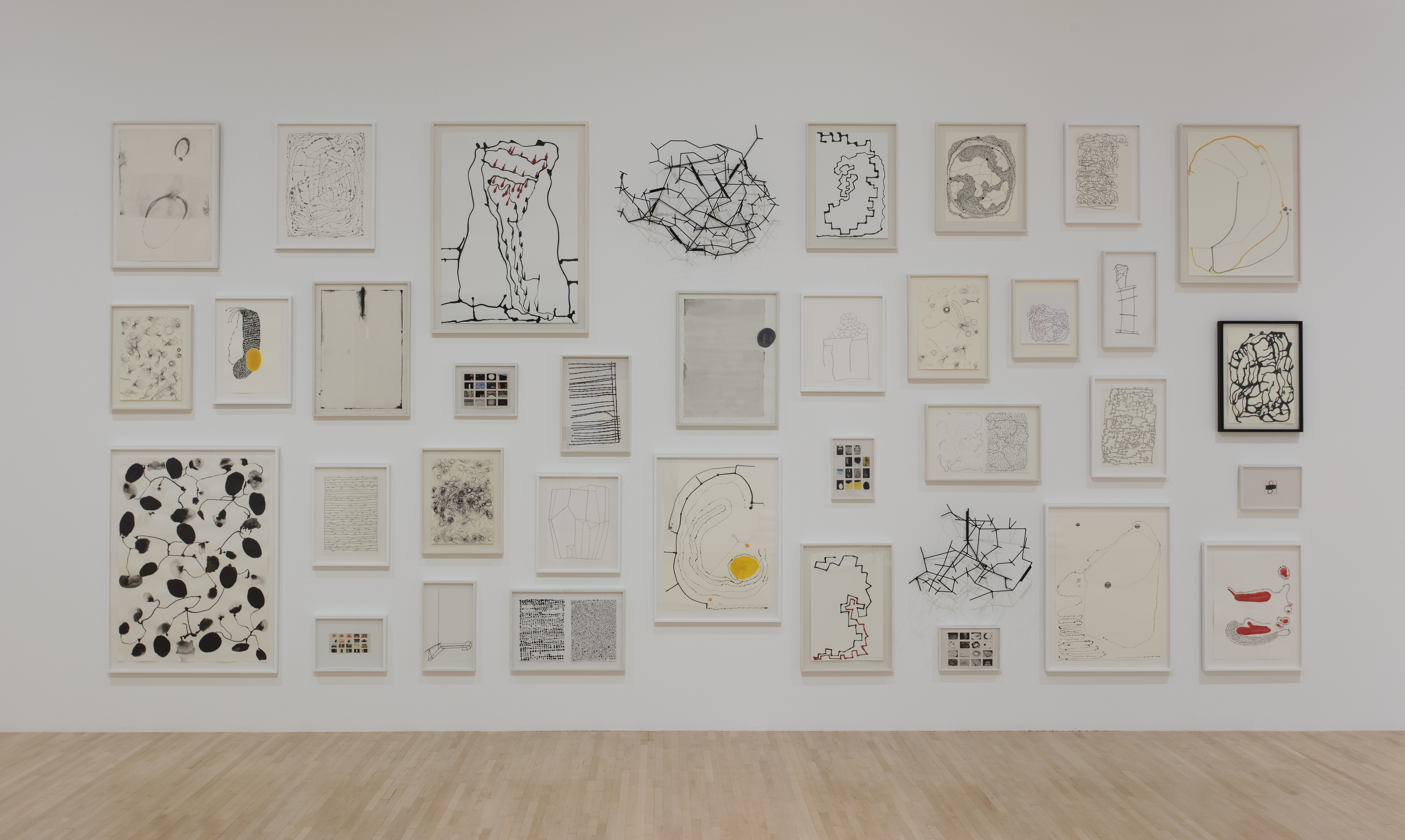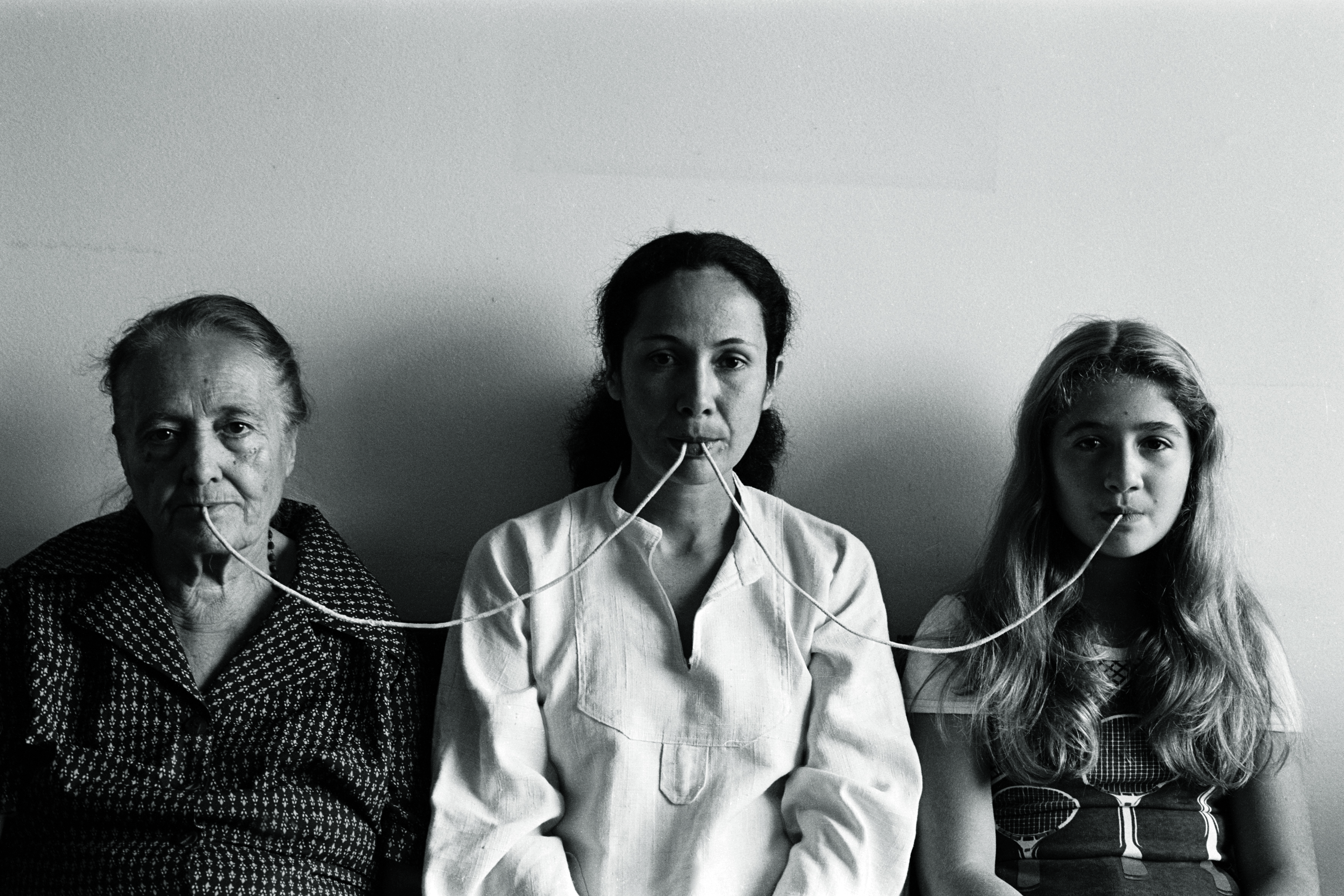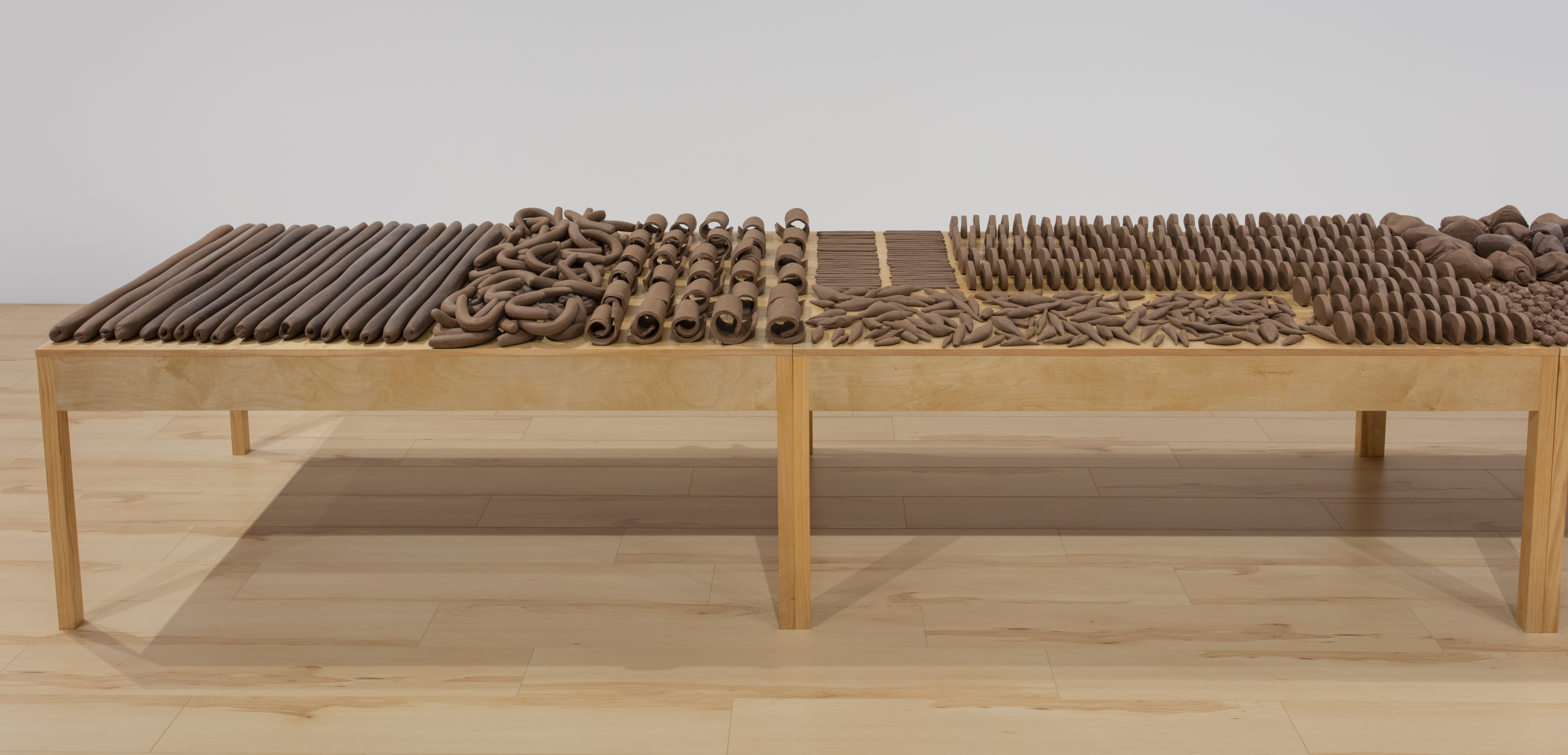Language of Permission: Anna Maria Maiolino
by Paige Landesberg
Anna Maria Maiolino’s vocabulary is expressed through a combination of form, symbol, and material that articulates the artist’s path through labor, motherhood, and migration. The first room of her recent self-titled retrospective exhibition at the Museum of Contemporary Art in Los Angeles (MOCA LA), presented as part of The Getty’s Pacific Standard Time’s: LA/ LA (Latin America & Latino Art in LA), was focused on works on paper, which served the crucial purpose of acting as a key for reading the rest of the show. Through her lifelong exploration of drawing and printmaking, Maiolino reveals how visual language chronologically maps the emotional, physical, and political body in space.

The drawings in the exhibition are predominantly grayscale, with formal compositions: a square, a grid, a cross, the contour of a head or body. Small disruptive acts manifest in the picture through either the use of intense color, a tear in the paper, a jarring single word, a gaping orifice, or a piercing with needle and thread, giving the work a sense of sculptural dimensionality. In many of the drawings, several inches are left between layers of paper, creating mysterious dark shadowed space. These intrusions establish a sense of boundaries being broken—the contained element refusing its container. The drawings express a language of permission, erotic freedom, and play.
In Capitulo II (1976/1999), Maiolino offers isolated words that describe emotions, dates, places and states of being, all dispersed throughout a grid. A sense of self is discovered within the narrative of a cultural system through the consistent pattern and the presence of a repetitive capital “I”. Within this set up, Maiolino’s approach manages to be authentically playful and non-rigid. This mind map is a loose guide to the artist’s mundane dayto- day, but can also be looked at as a conceptual map for decoding Maiolino’s language, as it is applied to a body, or a self, within a contained system.
Maiolino was born in Italy in 1942, and moved with her family to Venezuela in 1954, then to Brazil in 1960. In 1968, she moved to New York in hopes to escape Brazil’s repressive political regime, where she studied at the Pratt Institute and was exposed to other Latin American artists working in the city, namely Helio Oiticica and Lygia Clark. However, Maiolino struggled to situate her art practice and children in the US, and in 1971 moved back to Brazil.

Maiolino’s personal history is the story of a migrant body—a mother and artist negotiating her various roles in culture and industry. We each have our own version of this negotiation that we must grapple with: how do we participate in rigid global systems while still accounting for ourselves as emotional and physical beings? Maiolino exerts her life’s work to interrogating this question, addressing the task through a language that is both specific to her own experience, and yet culturally ubiquitous.
As the years pass in Maiolino’s practice, her drawings begin to burst out of small-scale picture planes to embody what they once illustrated. Maiolino’s sculptures in plaster, concrete, and clay depict abject shapes that are at once sensual and grotesque. Like the drawings, the sculptures share a common vocabulary of symbolism and material process. Through works such as Um, Nenhum, Cem Mil (1993), which translates to One, None, One Hundred Thousand, and the series, A Sombra do Outro (1993/2005), or Shadow of the Other, Maiolino builds a world around the viewer through physical case studies of bodies in space.
In this way the compositions become maps—demarcating the maker’s relationship with labor in an oppressive global landscape. A multitude of replicated units make up tight compositions within each sculpture—at the same time, each repeated form has a queer inability to fully conform to its space. The repeated forms within the clay sculptures nudge up against one another, as bodies coping and negotiating space, where each unit is a slight variation on its neighbors, the result allows the work to interact with the space uniquely.
These works were made at a time when mass production, and the artists responding to it, was all-encompassing; however, Maiolino’s sculptures reinsert a humanness through soft shapes and material that come across as the document of a handmade process. The artist’s choice to represent labor and production through clay—a natural material—contradicts the trend among other artists of her time who worked predominantly with austere industrial metals.

Her massive clay installation, Estão na Mesa (2017), translating to They Are on the Table, is the most awestriking work in the exhibition, reiterating and enlarging the essential ideas expressed throughout Maiolino’s impressive body of work. A long table displays an array of repeated small clay shapes in a room where the walls are coated with clay squeezed into fencing, as long piles of limb-like coils of clay lay across the floor. All of the clay in this room remains wet, as though it had just been exposed to air for the first time. Knowing that the clay is still moldable gives the gallery great vitality—there is a magical sensation that the material is refusing its own limits.
Documentation of the performance works in the exhibition more overtly display Maiolino’s body as political and personal subject matter. The series of photographs, É o que sobra (1974), or What is Left Over, shows Maiolino attempting to cut off her nose and tongue with a pair of scissors, while her photograph Por Um Fio (1976), or By A Thread, shows a thread running through the mouths of her mother, her daughter, and herself in the center. Maiolino’s mouth is made the center of attention in many of these works—functioning as an orifice through which repression is contained, pleasure is released, protest is outburst, and history is voiced.
Throughout the various media Maiolino incorporates into her practice, with this first major United States’ museum retrospective, we see her ability to sustain and invent a new visual language—her experience is translated into an autobiography, while managing to remain generously open to viewers building their own intimate relationship with the work.
Anna Maria Maiolino ran at MOCA LA from August 4, 2017—January 22, 2018.